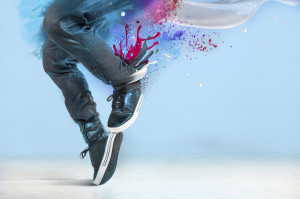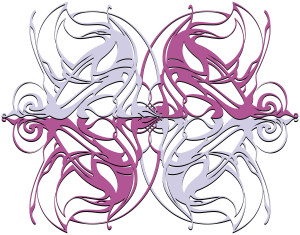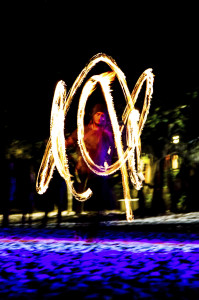 Bringing choreutics to life means finding a way to make it personally meaningful. This is the key to being able to teach this part of Laban’s work in a lively way.
Bringing choreutics to life means finding a way to make it personally meaningful. This is the key to being able to teach this part of Laban’s work in a lively way.
The forthcoming Octa workshop aims to support personal understanding and good teaching practice. So there will be homework assignments that ask participants to bring their own imaginative forces to bear on moving and teaching choreutic forms.
For example, consider the Primary (aka Standard) Scales. There are four of these 12-rings. These lengthy scales meander across the surface of the kinesphere, passing through each of the four corners of the vertical, horizontal, and sagittal planes and returning to their starting point.
Whew – it’s hard to even describe these spatial sequences in words! It is even more challenging to remember and perform these sinuous sequences, for their twists and turns can feel counter-intuitive….
But there are ways to bring body and mind together. Here are a few suggestions. The Primary Scales can be subdivided into phrases linking three or four signal points. These shorter phrases have respectively the shape of a C or an S. Musical accompaniment in either 3/4 or 4/4 time can help the mover phrase these trace-forms. Careful choice of the planar starting point can give the scale a certain character.
For example, I have found that I like linking three signal points and starting and ending each phrase of the scale in the sagittal plane. If I’m leading with the right arm, this neatly partitions the scale into two halves, the first transiting through the right hemisphere of the kinesphere, and the second through the left hemisphere.
This approach works fine for me with two of the four Primary Scales. For the other two, I’ve had to develop a mnemonic verse to remember where I go and why.
Join me in finding new ways to bring choreutics to life in the upcoming Octa workshop July 19-21, in Golden, Colorado.

 Like many movement analysts, I’ve always thought that choreutics was synonymous with space harmony. But now I see that choreutics is not just about space. For Laban, choreutics is the whole enchilada. It is body, effort, shape, and space – movement as an integration of the physical, psychological, and spiritual.
Like many movement analysts, I’ve always thought that choreutics was synonymous with space harmony. But now I see that choreutics is not just about space. For Laban, choreutics is the whole enchilada. It is body, effort, shape, and space – movement as an integration of the physical, psychological, and spiritual. In his theoretical masterpiece Choreutics, Rudolf Laban writes that “getting the ‘feel’ of a movement gives real understanding of it.” Thus the upcoming Octa workshop,
In his theoretical masterpiece Choreutics, Rudolf Laban writes that “getting the ‘feel’ of a movement gives real understanding of it.” Thus the upcoming Octa workshop, 





